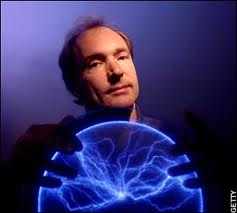By Chris Davies
The spectacular spectacular with which Danny Boyle opened the Olympics had many things to recommend it. But alongside the dazzle, wit and downright eccentricity of the whole thing, there were two aspects of the opening ceremony that led me to reflect on the complexity of social systems.

The first was Boyle’s history lesson. By selecting the Industrial and Information Revolutions as punctuation for his story, Boyle picked not only two great moments of British creativity (the former more than the latter, of course), but also two key periods in the complexity of human society.
By enabling previously inaccessible stores of chemical energy to be harnessed, the Industrial Revolution made possible an explosion in the diversity of production, which in turn made human society dramatically more complex. Broadly speaking, what happened was: cheaper energy led to cheaper production, which facilitated greater diversity, which involved greater complexity; and this catalysed a substantial increase in living standards.
The digital transformation currently sweeping the world, stimulated in part by Tim Berners-Lee’s creation of the World Wide Web, will be similarly far-reaching in its effects; indeed it is already creating major policy challenges, as I described in a previous blog. By reducing to almost nothing a whole swathe of transaction costs, the Information Revolution seems to be giving way to a second great wave of “complexification”. It will do this by allowing us to combine ever greater numbers of components in complex social systems, probably giving way to increased specialisation, and unleashing greater levels of net wealth. As I argued in my previous blog, this is likely to be net beneficial but we should be mindful of the pain involved.
- The second aspect of the opening ceremony that spoke to complexity was a subtler one. This was the message that achievement is a collective, systemic phenomenon, not simply the result of one person’s endeavours. This may seem paradoxical in the context of something like sport, which is surely the very acme of individualism: what on earth does Usain Bolt’s ability to run the 100 metres in 9.58 seconds have to do with the broader social system?

 exercise, to study self-defense, and to practice resilience, self-control, and courage under pressure.
exercise, to study self-defense, and to practice resilience, self-control, and courage under pressure.